
Not a lot of people know about the various types of jellyfish residing in the ocean. Sometimes, some of the jellyfish you encounter might not even be jellyfish at all. Many wonder how these majestic-looking sea creatures can cause so much harm, especially when some of them could be so tiny. Jellyfish come in various shapes and sizes too. The smallest jelly might be deadlier than the largest stinger. But how do we differentiate them while swimming underwater?
You must familiarize yourself with the types of jellyfish before you plan your next beach trip. They thrive in different types of climates and you may or may not spot some during your beach getaway. However, we suggest you prepare as it’s better to be safe than sorry. Some jellyfish stings bring about lethal poison into the body while others just leave nasty-looking scars on the skin. To spare you from unwanted jellyfish encounters, we compiled a list of the different types of jellyfish that you need to know about.
Why do you need to know about the different types of jellyfish?
These jellyfish in the ocean intimidate even the most experienced divers in the world. Jellies can ruin almost any dive or swim in the open water. They use the small stinging cells present in their tentacles to stun or paralyze their prey.
So far, scientists documented around 2,000 types of jellyfish. But they believe that there are over 300,000 species that remain unseen. Experts discovered that jellyfish hold important roles for different types of fish. Some juvenile fish stay close to jellyfish to protect themselves from predators. Some of its species also manage to thrive in polluted environments. Because of this, marine biologists describe stingers as the most important predators in the open sea.
Lion’s Mane Jellyfish (Cyanea capillata)

You can’t miss seeing a Lion’s Mane Jellyfish while exploring the open ocean. Their mane-like tentacles can grow up to 120 ft long. Because of this, marine biologists consider the Lion’s Mane Jellyfish as one of the largest species of jellies. Researchers usually spot them swimming in cold climates like the Arctic or the North Pacific Oceans. So, you might also encounter them if you go on a trip to colder seas like Alaska or Washington.
The Lion’s Mane Jellyfish stuns its prey by wrapping its tentacles around them. Their bodies also possess bioluminescent properties that make them glow underwater. They usually breed in March or early May.
Moon Jellyfish (Aurelia aurita)
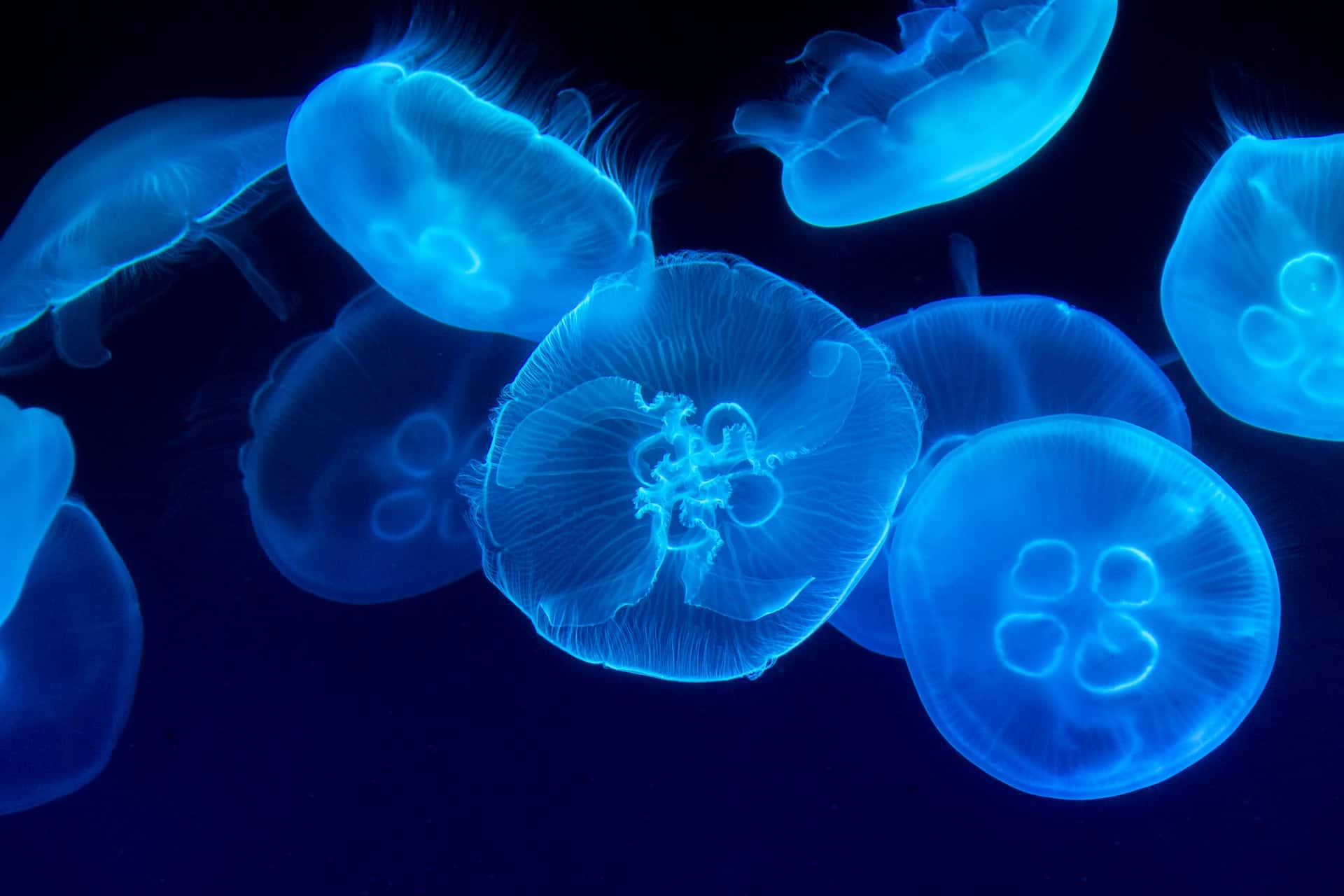
During beach outings, you probably spotted a few types of jellyfish that washed up ashore. That usually happens to the Moon Jellyfish due to their habit of staying near the coast. Plus, these jellies are known to be weak swimmers. This makes them easy prey for marine predators like the ocean sunfish or the leatherback turtle. The said predators need to consume large amounts of Moon Jellyfish because of the low nutritional value of each jelly.
The Moon Jellyfish’s life cycle intrigues even the most experienced marine biologist. These jellies breed or mate with a combination of sexual and asexual reproduction. Because of this, their unique technique helps increase their population near coastlines. They can also thrive in different climates all year round. Also, you don’t have to worry about getting stung by a Moon Jellyfish. Their stingers don’t have any fatal side effects. You should still stay away from them if you don’t want to experience the pain from their sting.
Black Sea Nettle Jellyfish (Chrysaora achlyos)
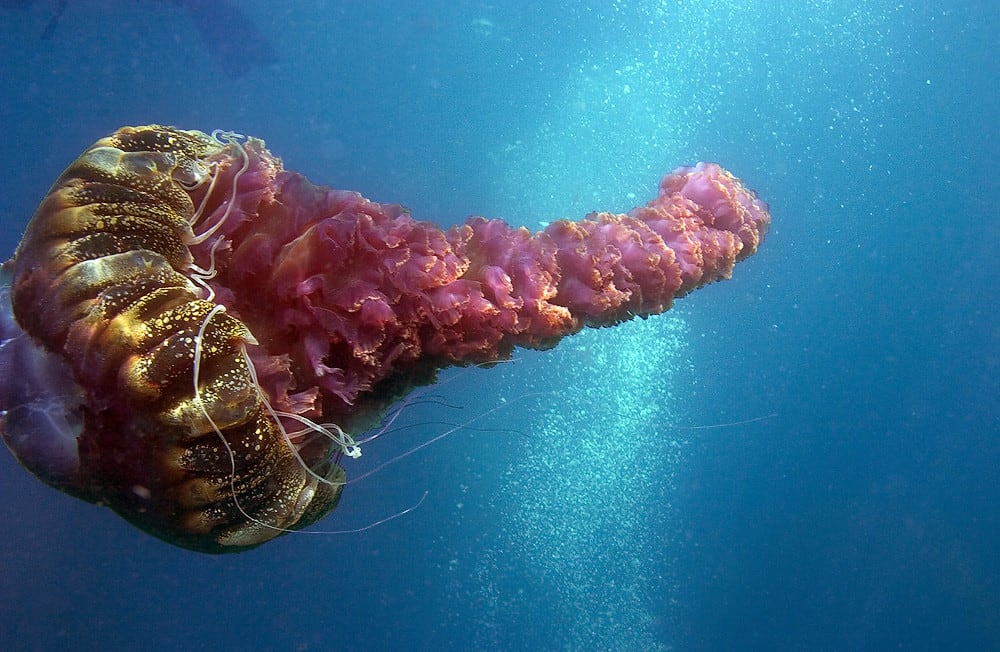
Much like the Lion’s Mane Jellyfish, the Black Sea Nettle Jellyfish claims a spot on the list of the largest types of jellyfish. You might see them while diving into Southern California’s deep Pacific waters.
If you do encounter a Black Sea Nettle Jellyfish, remember to stay away from its long tentacles. We can’t imagine getting caught up in the jellyfish’s stingers that can grow up to 25 ft long. Much like most jellies in the open ocean, the Black Sea Nettle Jellyfish intrigues most marine biologists. This curiosity comes from the fact that this type of jellyfish barely survives captivity.
Box Jellyfish (Cubozoa)
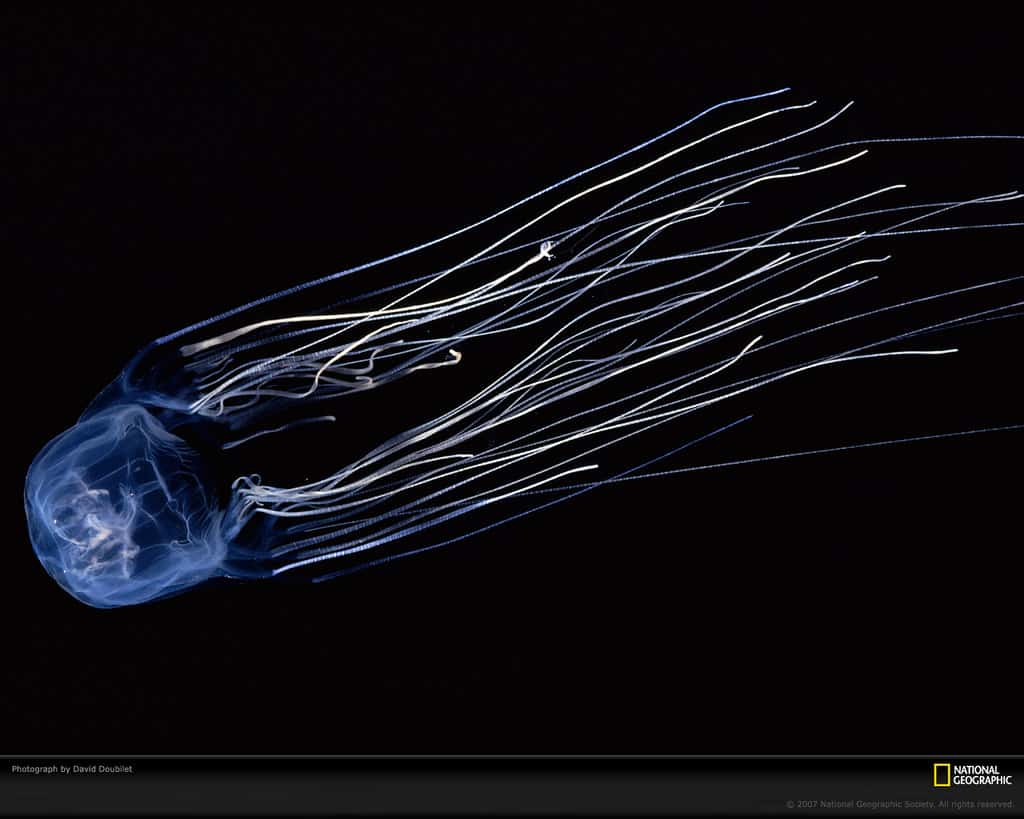
You must stay alert when you encounter the Box Jellyfish in the ocean. They usually reside along the coast of Northern Australia and throughout the Indo-Pacific Ocean. If you get stung, the notorious jellyfish’s venom instantly attacks your heart, nervous system, and skin cells. The pain brought upon by its sting triggers an overwhelming pain that causes shock or a heart attack.
Shark attacks would be the least of your worries when you spot a Box Jellyfish while swimming. They can instantly stun or kill any living thing with their slim stingers. People who survived the Box Jellyfish sting still experience excruciating pain for as long as 2 to 3 weeks. Sometimes, experts also call them sea wasps or marine stingers.
Irukandji Jellyfish (Carukia barnesi)
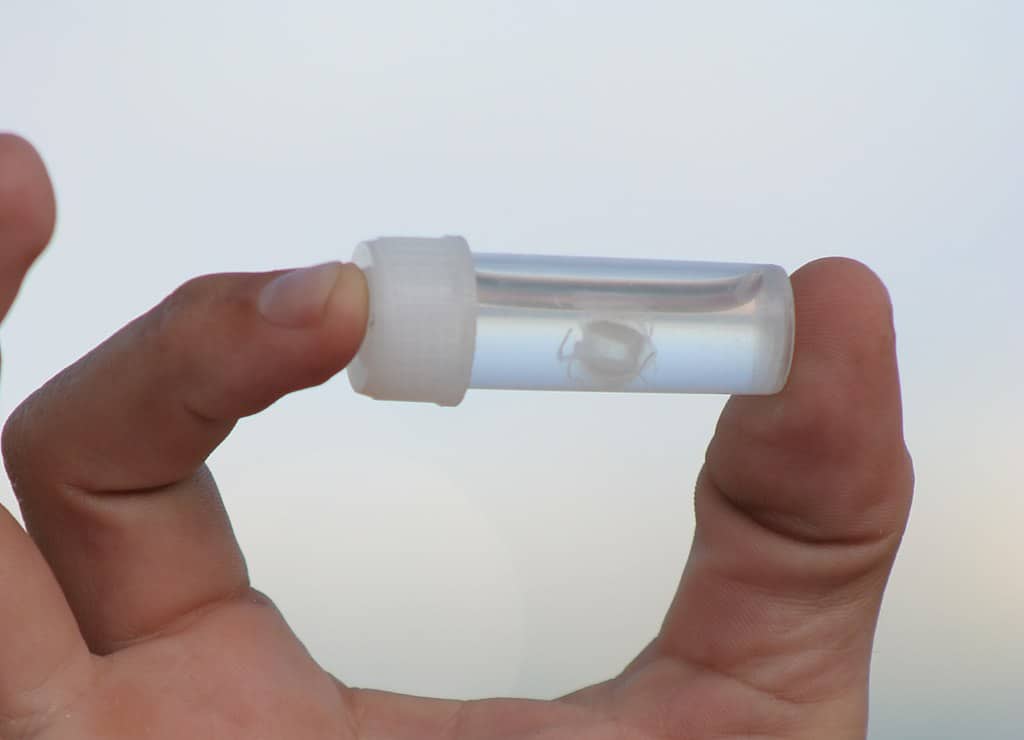
Don’t be fooled by this jelly’s small size. Experts dubbed the Irukandji Jellyfish as the most dangerous stinger among all jellies in the open seas. Why? Well, most victims of the Irukandji Jellyfish’s sting don’t survive from the intense pain brought upon by its venom. Those who survived went through such a terrible experience that it earned its name, the Irukandji Syndrome.
The Irukandji Jellyfish got its name from an Australian aboriginal tribe. This came from the fact that this type of jellyfish first showed up along the coastal waters of Cairns, Australia where the tribe resides. If you get stung by the Irukandji Jellyfish, you won’t feel the immense long-lasting pain until later on. The sting administers a mild discomfort at first. After about 10 minutes, the area of the sting will start to release sweat. Then, the overwhelming pain occurs between 20 to 30 minutes following the sting. You will feel intense sensations in your stomach, back, limbs, and head. This, in turn, triggers vomiting and trouble breathing. Once you start to feel these symptoms, quickly seek medical help. You can survive an Irukandji Jellyfish with enough pain medicine and rest.
Sea Anemone (Actiniaria)
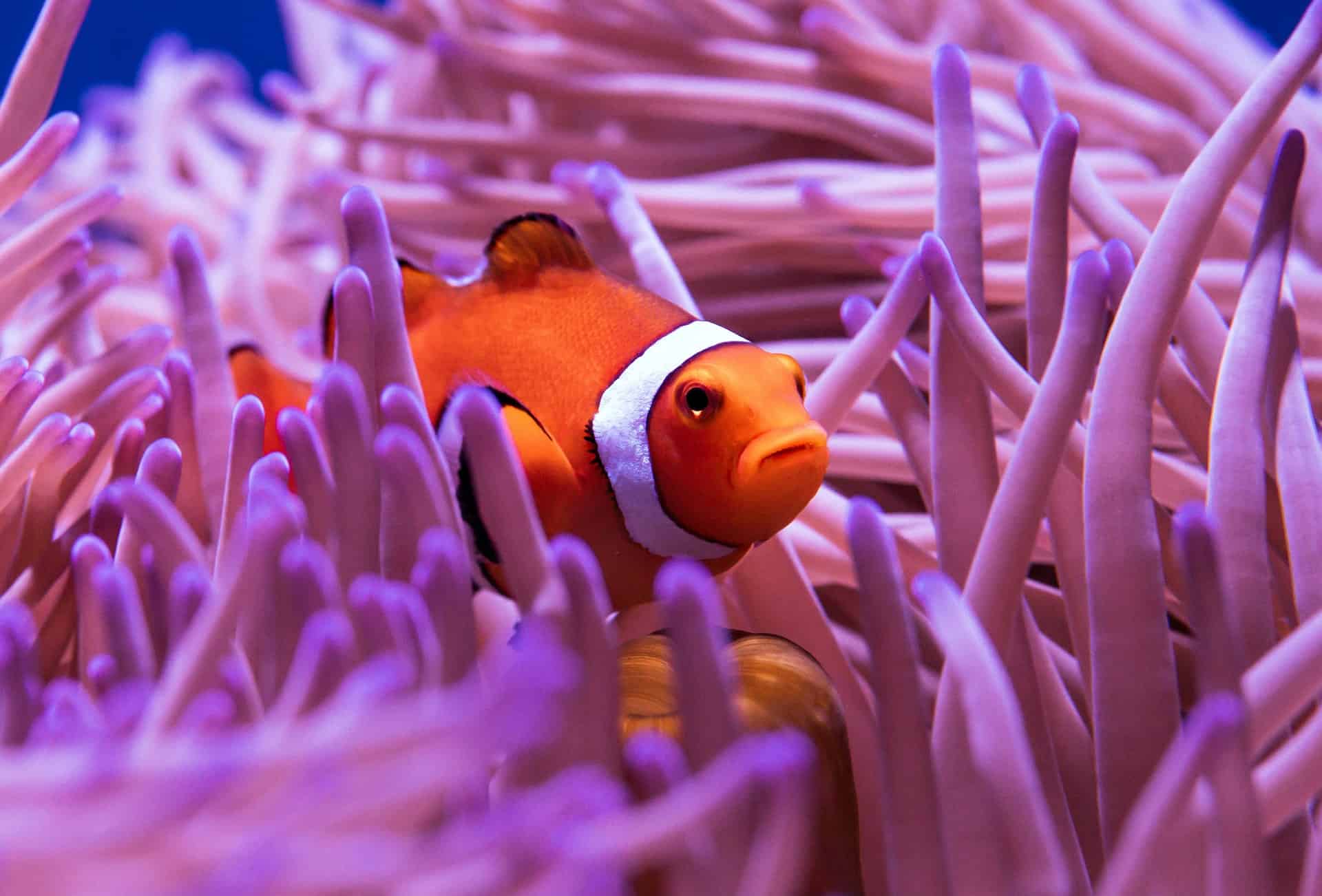
Sea anemones may not be included in most compilations of the types of jellyfish in the sea but the ornate stinging polyps fall in both the coral and the jellyfish categories. They usually grow on rocks located at the bottom of the sea. While there, sea anemones patiently wait for unsuspecting fish to get caught up in their stinging tentacles.
If you watched “Finding Nemo,” you probably noticed the symbiotic relationship between sea anemones and clownfish. The clownfish protects itself from the sea anemone’s sting with the mucus layer of their bodies. You can easily find both creatures living peacefully in coastal tropical waters.
Blood-belly Comb Jelly (Lampocteis cruentiventer)

You don’t have to be scared of observing the beauty of some types of jellyfish. That includes the mesmerizing array of colors of the Blood-belly Comb Jellyfish. They don’t have the usual stinging tentacles. Instead of stingers, this type of jellyfish uses its cilia to distract predators. The cilia release a substance that looks like a small colorful light show in the sea. These unique features make them harmless to humans.
While in the deep waters, the Blood-belly Comb Jellyfish’s distinct bright red color becomes nearly invisible. The jellyfish’s dark red underbelly helps mask its bioluminescence glow that attracts predators.
Mauve Stinger (Pelagia noctiluca)
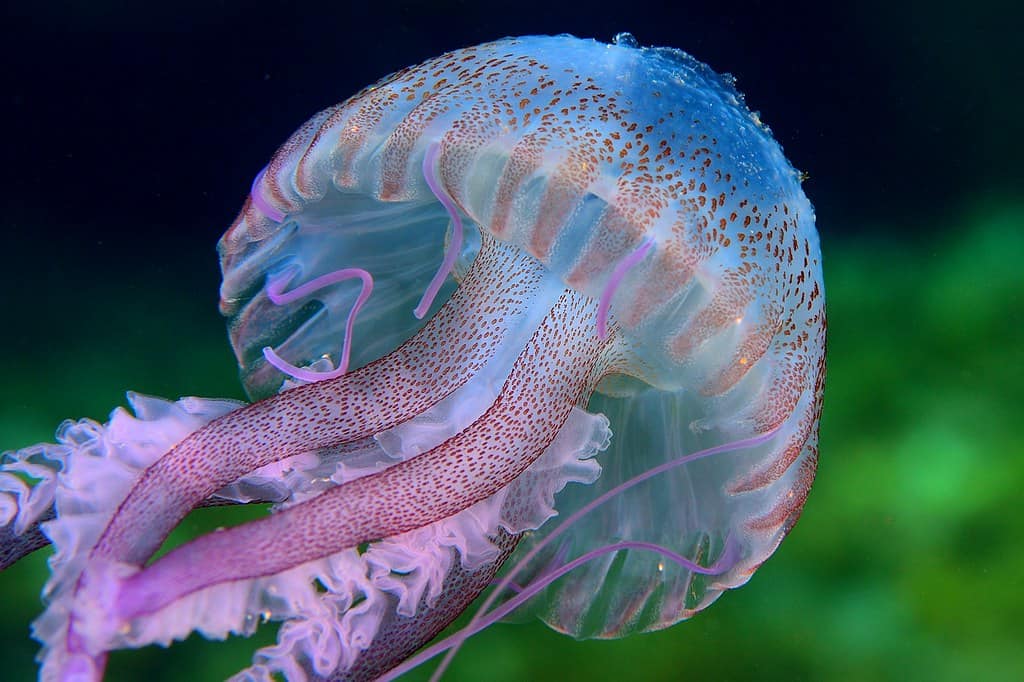
You should never underestimate the cute blue-purple colors of the Mauve Stinger. It may look small but their stingers can grow up to 3 m long. They also project powerful stinging tentacles.
They formed a symbiotic relationship with amphipods that usually stay inside Mauve Stinger’s ring of tentacles. The small crustaceans can withstand the jellyfish’s sting making them great swimming companions. You can spot Mauve Stingers swimming along the warm European waters like the Mediterranean.
Crystal Jellyfish (Aequorea victoria)
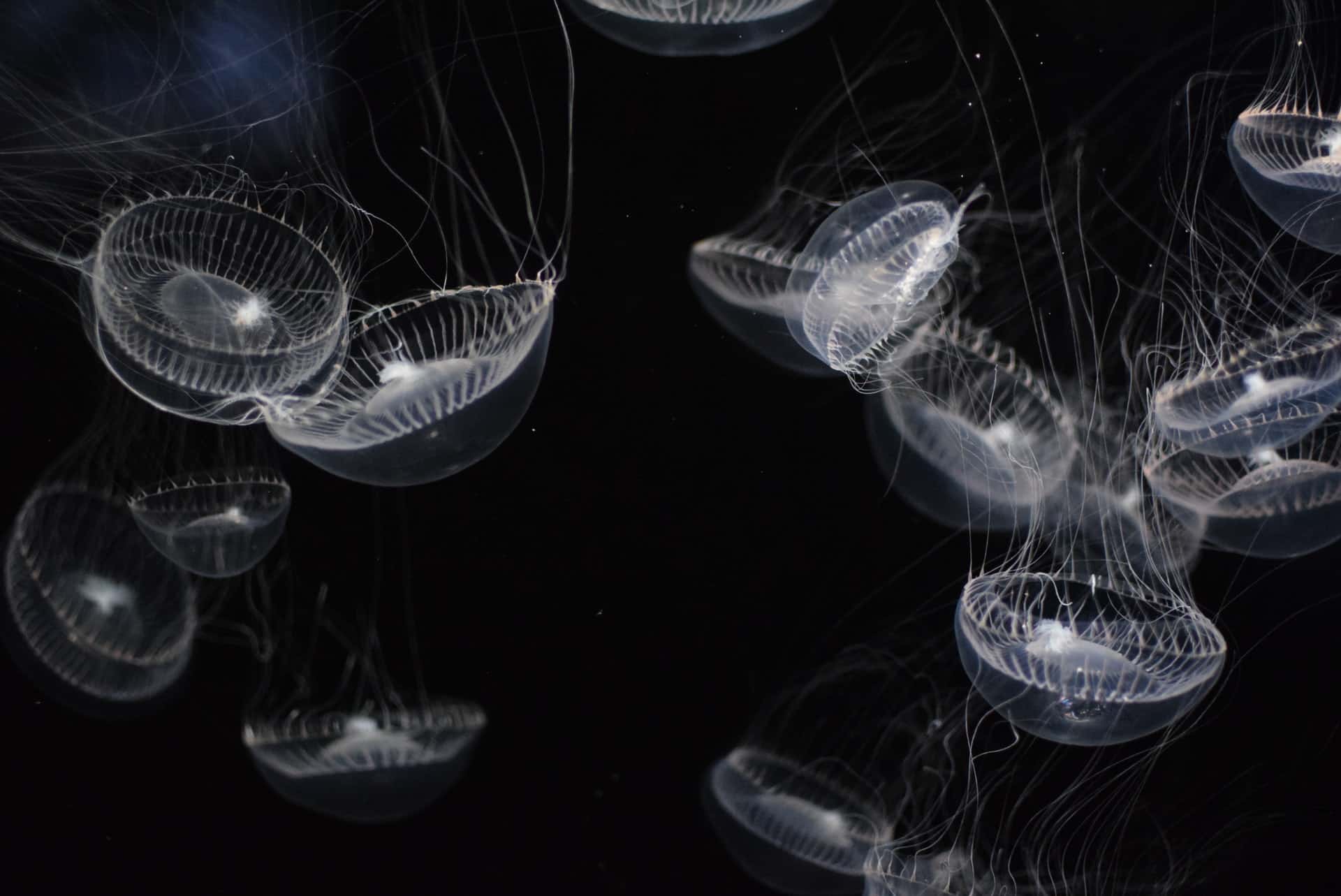
True to its name, the Crystal Jellyfish is nearly invisible with its transparent body. They have around 150 tentacles along with their glass-like bell. During the day, the Crystal Jellyfish literally looks like crystals wading in the water. You can try to spot them swimming along North America’s coast.
At night or in the deep waters, the Crystal Jellyfish shines with its bioluminescent features. Fun fact: these jellies use two bioluminescent proteins to create their glow. Their distinct glow comes from aequorin, a photoprotein, and green fluorescent protein.
Cauliflower Jellyfish or Crown Jellyfish (Cephea cephea)
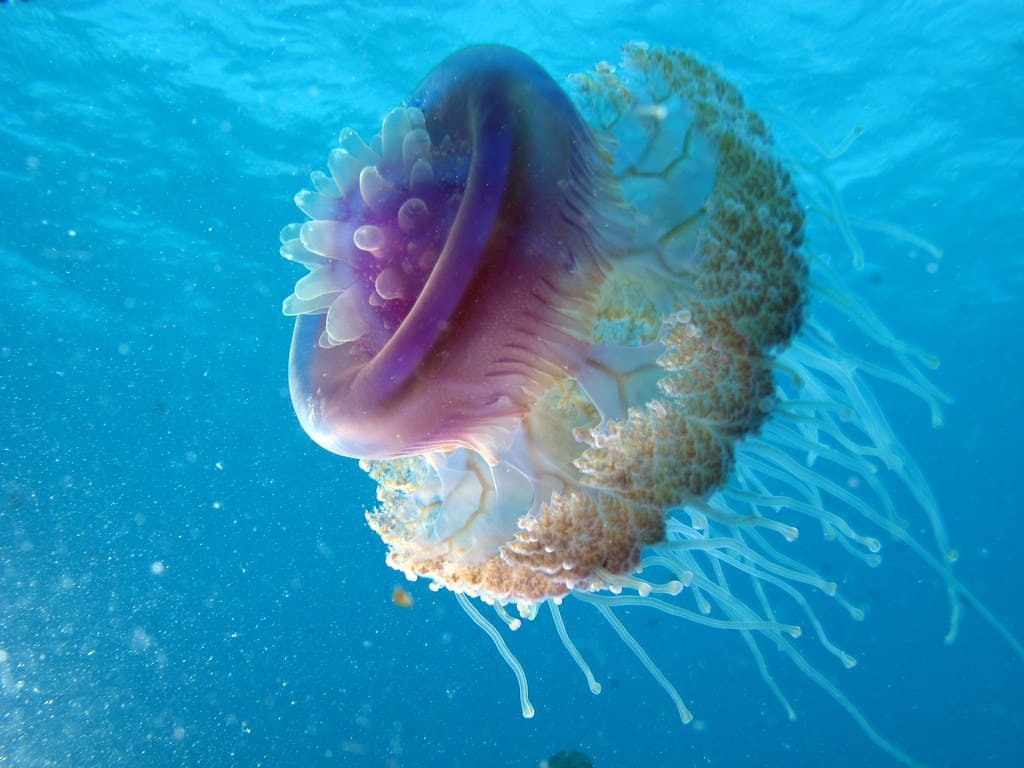
The Cauliflower Jellyfish got its name from its bell that closely resembles a cauliflower. Because of this, this jellyfish also goes by the name Crown Jellyfish. The unique features make this type of jellyfish a sight to behold in the sea.
The Cauliflower Jellyfish usually reside in the mid-Pacific to Indo-Pacific waters. If you happen to encounter them, be warned. The Cauliflower Jellyfish holds a spot in the list of most venomous jellyfish species in the world. Despite that, their stings don’t hurt as much as those of the Box Jellyfish.
Plankton, algae, small shrimp, and invertebrate eggs make most of the Cauliflower Jellyfish’s diet. If you travel to China or Japan, you might get the chance to eat Cauliflower Jellyfish. Citizens of the two countries consider these jellies as part of their treasured delicacies. They also use the Cauliflower Jellyfish for some medicinal purposes.
White-spotted Jellyfish or Australian Spotted Jellyfish (Phyllorhiza punctata)
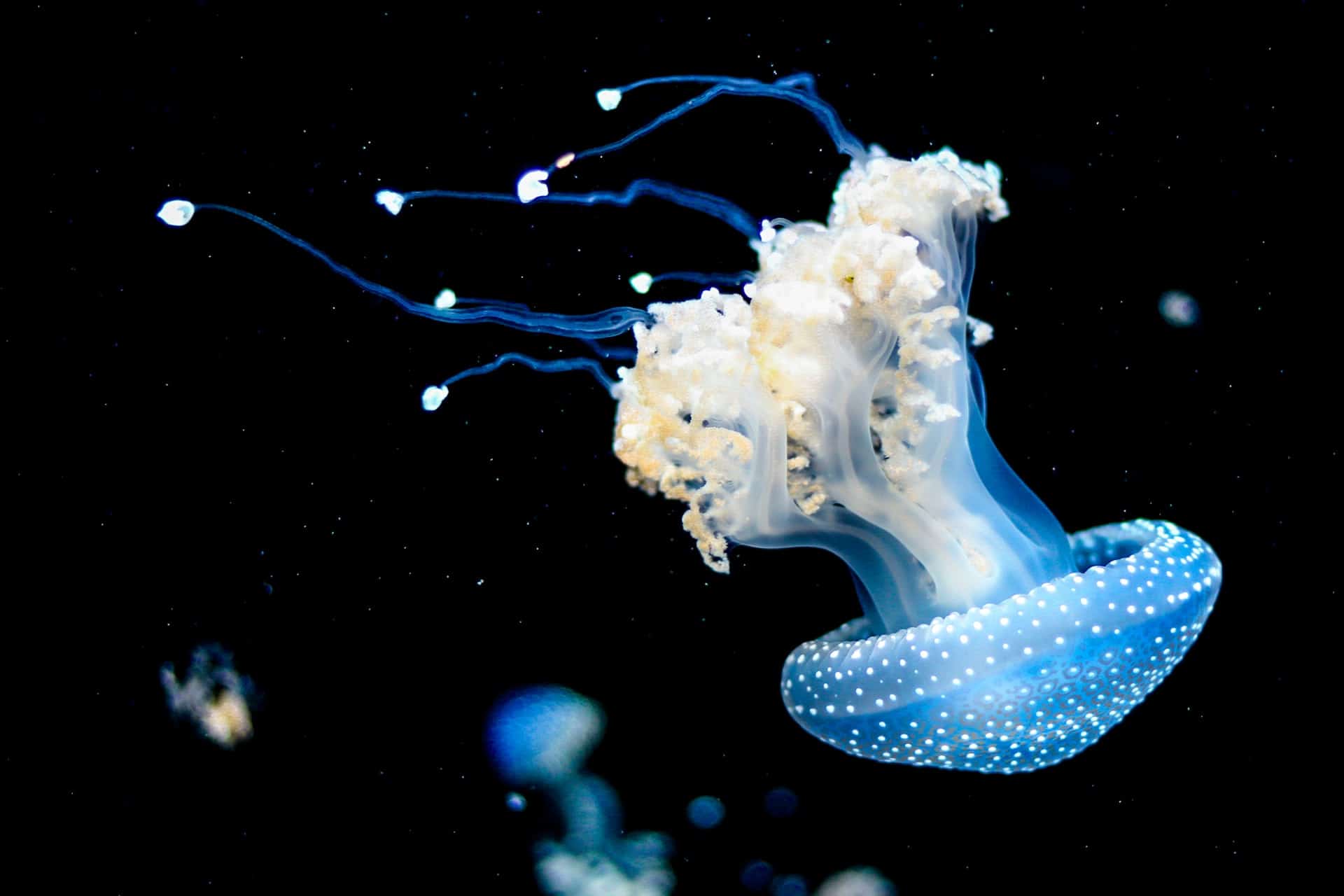
No need to panic if you get stung by a White-spotted Jellyfish. Their mild venom doesn’t cause any serious harm to humans. This type of jellyfish rarely uses its venom even when it comes to hunting food. Experts distinguish them as filter feeders like oysters and sponges. They usually clump together in the Gulf of California, the Gulf of Mexico, and the Caribbean Sea.
A swarm of White-spotted Jellyfish can filter over 50 cubic meters of ocean water every day. Because of this, they can easily clear an area of zooplankton. Unfortunately, this causes an immense food shortage for fish and crustaceans. Their greed for consuming food earned them a notorious spot on the list of invasive marine species.
Fried Egg Jellyfish or Egg Yolk Jellyfish (Cotylorhiza tuberculata)
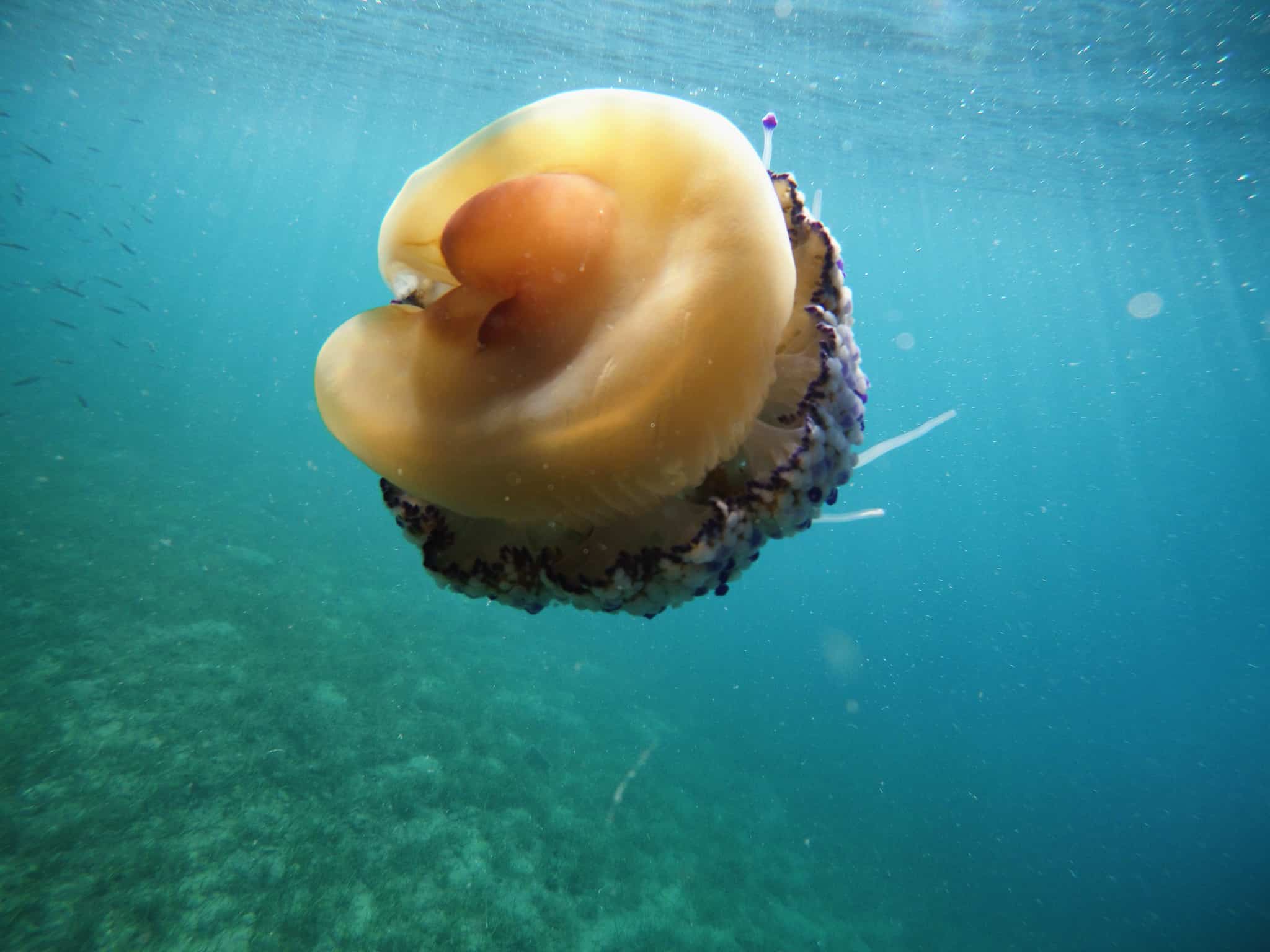
True to its name, the Fried Egg Jellyfish or the Egg Yolk Jellyfish looks just like the all-time breakfast favorite that you pair with bacon and toast. This type of jellyfish doesn’t move as much. This makes them look like fried eggs drifting in the open water of the Mediterranean Sea.
The sting of the Fried Egg Jellyfish causes no harm to humans. Actually, small fish seek shelter between the jelly’s tentacles because their stings barely bring any pain. Despite usually staying motionless, the Fried Egg Jellyfish swims actively by pulsing its bell. When it comes to size, these round jellies can reach up to 35 cm in diameter.
Swarms of Fried Egg Jellyfish usually appear in the summer. Back in July 1974, the Israeli coast barely looked visible because of the kilometers-long stretch of Fried Egg Jellyfish drifting along its waters.
Flower Hat Jellyfish (Olindias formosus)
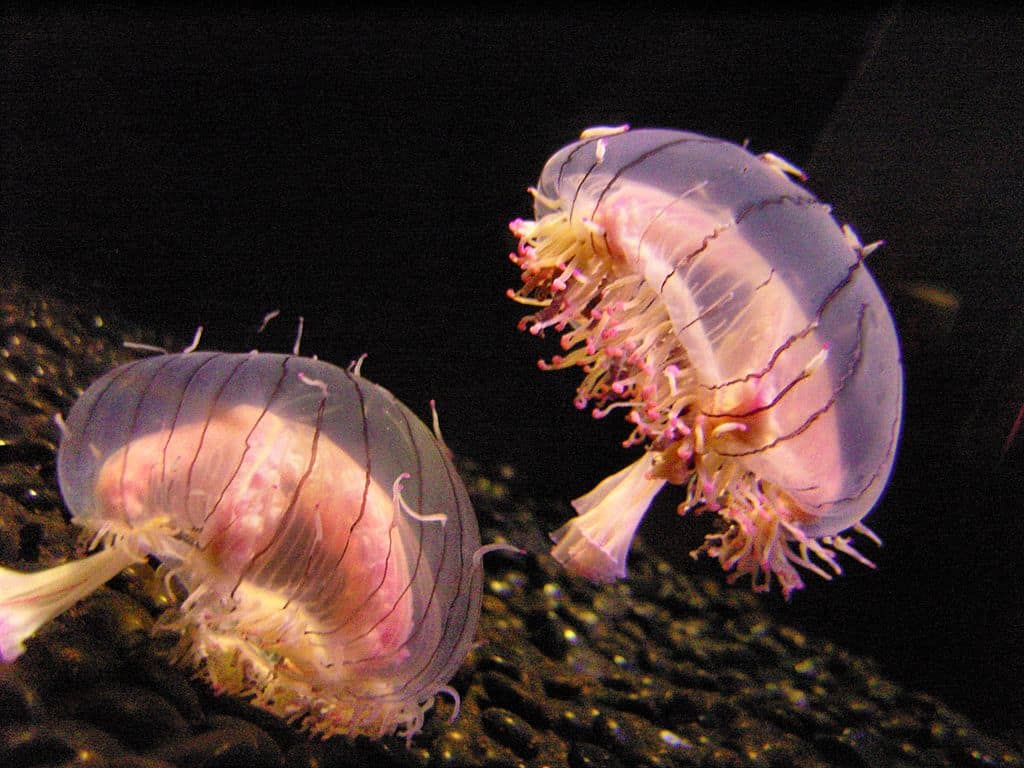
Don’t mistake the Flower Hat Jellyfish for a floating hat in the open water. You might encounter them in the coastal waters of Brazil, Argentina, and Southern Japan. They usually swim near the ocean floor among the seagrass. The setting makes it seem like a hat just happened to fall on the grass, only it’s actually underwater.
Flower Hat Jellyfish drift near the seagrass to prey on small fish. Be careful if you encounter them during your underwater dive. The jellies bring upon intense pain from their stingers. Since they usually swim near the ocean floor, you’ll barely make it to shore if you get stung. If you do survive, a bright rash appears on the area of the sting to remind you of the experience. Plus, blooms of Flower Hat Jellyfish annoy the hell out of fishermen. The jellies usually clog fishnets or scare away shrimp that the fishermen hoped to catch.
Atolla Jellyfish (Coronate medusa)
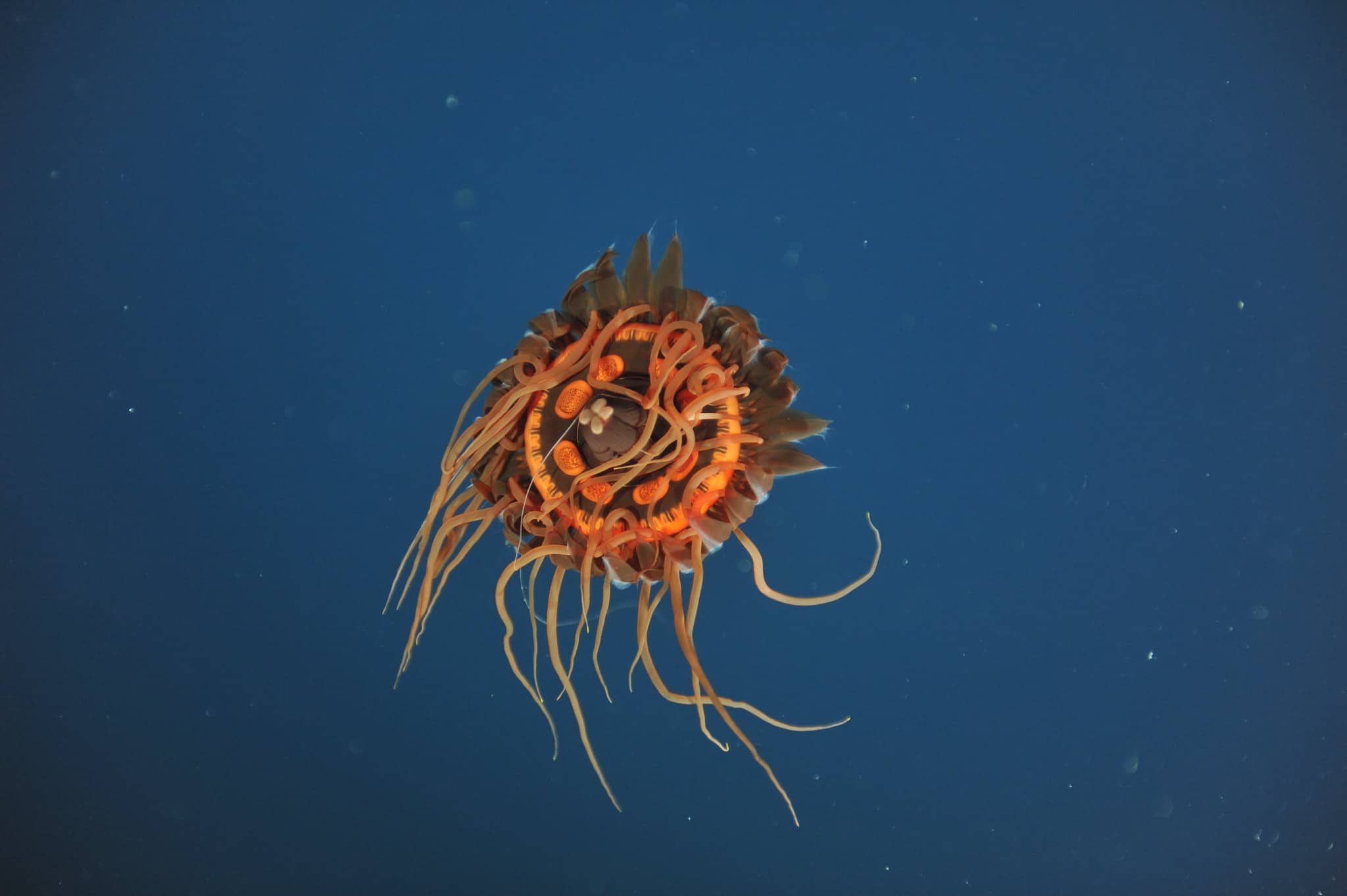
Wherever you plan to go for an ocean getaway, you might spot Atolla Jellyfish fluttering by in the deep sea. Since they prefer the deeper end of the ocean, this type of jellyfish uses its handy bioluminescent abilities to navigate the waters.
Unlike most jellyfish that glow in the dark, the Atolla Jellyfish uses its unique ability to ward off predators. Once threatened, these jellies produce a series of bright flashes that attract other predators to prey on their original attacker. Afterward, the jellyfish quickly swims away to keep themselves from the predators they lured to attack each other. Their unique survival tactic earned them the nickname, “Alarm Jellyfish.”
Narcomedusae Jellyfish
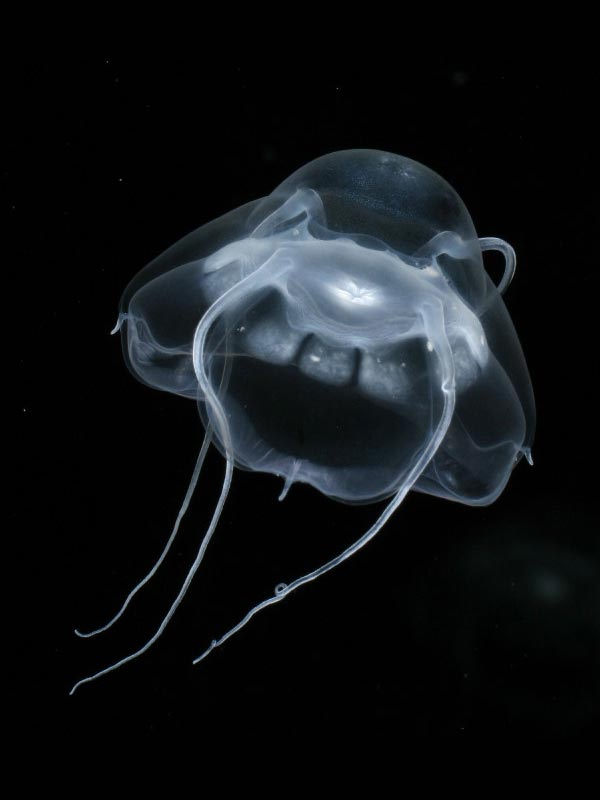
To describe the Narcomedusae Jellyfish as other-worldly would be an understatement. This jellyfish garnered fame for looking like Darth Vader from Star Wars. Its unusual shape also holds two stomach pouches. They consume their prey by holding out their long tentacles in front while swimming.
The Narcomedusae Jellyfish left researchers puzzled when some of them grew inside their mother. This makes them seem like Narcomedusae Jellyfish mothers somehow have wombs. The baby jellies seek safety inside their mothers’ bodies before swimming out to the deep blue sea. After leaving their mothers, they can still attach themselves to other types of jellyfish. With this, they can thrive using the efforts of other species.
Pink Meanie Jellyfish (Drymonema larsoni)

Don’t be fooled by the Pink Meanie Jellyfish’s name. This type of jellyfish prey on other jellies. They first appeared in large groups along the Gulf of Mexico. It may not seem like it from pictures but the Pink Meanie Jellyfish can grow up to 70 ft long. You can find them swimming along the US Atlantic Ocean, Coastal Caribbean Sea, and the Gulf of Mexico.
The Pink Meanie Jellyfish’s hunting technique is like a horror film for other jellies. The Pink Meanie use their super-long tentacles to entangle other jellyfish and eat them whole. Researchers believe that the Pink Meanie Jellyfish can consume as much as 34 jellies at a time.
Portuguese Man o’ War or Man-of-War (Physalia physalis)

These colorful floating creatures usually get mistaken as jellyfish so we added them to the list to sort out the difference. The Portuguese Man o’ War’s body is divided into different parts each tasked to float, catch prey, feed, or reproduce. You can spot them in tropical or subtropical seas with their heads sticking out of the water like balloons.
Due to their light bodies, the Portuguese Man o’ War usually gets washed ashore. Now it might be tempting to touch them but you must stay away from them at all costs. Just like most jellyfish, the Man o’ War can still cause harm with their stingers despite being out of the water for a long time. Their venom brings an overwhelming pain that causes welts to eventually appear on the exposed skin. Though rarely deadly to humans, the Man O’ War’s sting can instantly paralyze and kill small fish and crustaceans.
Was this page helpful?
Our commitment to delivering trustworthy and engaging content is at the heart of what we do. Each fact on our site is contributed by real users like you, bringing a wealth of diverse insights and information. To ensure the highest standards of accuracy and reliability, our dedicated editors meticulously review each submission. This process guarantees that the facts we share are not only fascinating but also credible. Trust in our commitment to quality and authenticity as you explore and learn with us.
